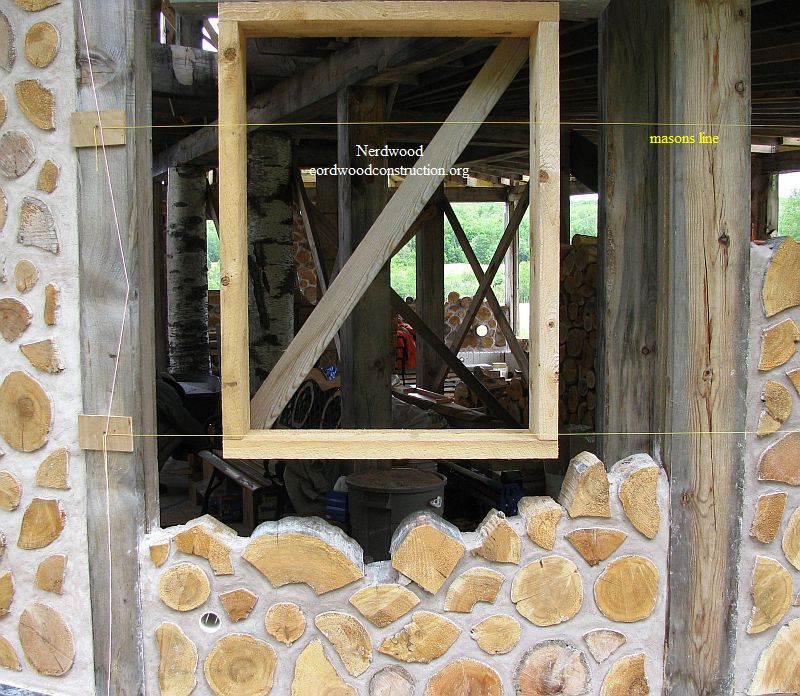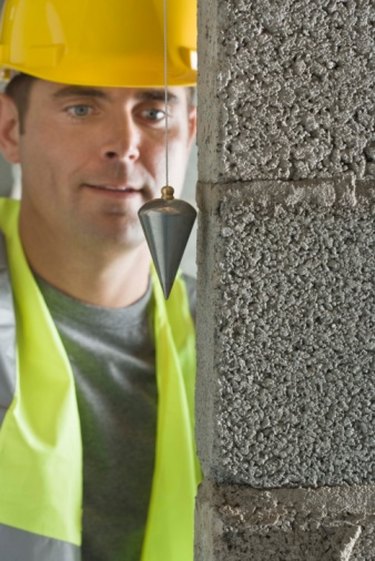
If you have questions that aren’t answered on the website you can email me at have requested a brief bio, so here goes: Should you wish to learn how to build a cordwood cottage, cabin or home, please visit While you are there, click on the pictures, read the brief articles, check out the latest workshops and newsletter and if you are interested click on the Online Bookstoreto see all the cordwood literature available in print and ebook format. This can also be accomplished (although not as beautiful) with a room-in-the-attic truss. This will provide additional space to the home (approximately half of the square footage downstairs). Note: This is the second floor of their lovely cordwood home. They used metal plates to speed the process of finishing the roof. Tracy Lee also shared how they built the timber frame roof trusses. I realized that hauling the mortar buckets from the mixer to the work area was causing the most muscle soreness so I started using a dolly to haul them and that has been working out great.” Once the wall gets too high that I can’t reach it sitting I then put my mortar bucket on the rolling bench so I don’t have to reach down so far and I can roll along the wall with me. I then use the foam board to set my mortar pails on so I don’t have to reach down so far. From there I can reach almost 3 feet high and roll around to get to mortar, sawdust, and cordwood without getting up. The pieces of blue foam board that are taped together I use to sit on for the first 2 rows on the floor. “Here are some more tricks I use to speed up the cordwood laying process and make it easier on the body. Has been through several storms and barely flaps.” I used the Tyvek that was around the house for the winter and just pulled it out and screwed 2 lattice strips on the bottom so I would have something solid to tie to scaffolding. “This setup has worked very well to keep Sun and rain off my walls and give me quick access to outside of walls for pointing etc. Tracy Lee, master cordwood builder, suggests the following for site prep. Setting up a work site for maximum efficiency. You don’t need much, but it stops cold air from entering the building at the window placement sites.ġ0.

The foam will grab and hold the sawdust and the wood. This type of closed-cell foam allows the insulation cavity to be sealed tightly, so there is NO settling of sawdust. Closed Cell Foam to reduce air infiltration. Then fiberglass has been stuffed into the insulation space and finally, a bead of mortar is placed and tuck-pointed on the outside.ĩ. In the picture above, a bead of mortar has been placed on the inside. Here are a few ways folks have succeeded. Mortaring “under the top plate” is very putzy and necessary. One of the most important places to stop your insulation from settling and creating a thermal nose bleed is when you are finishing a wall section that has been post framed. Mortaring “up” to a top plate or window box. Notice how the post is notched to “take” the weight of the LVL’s and whatever might sit upon them.Ĩ. Two LVL’s spliced in the middle of a post for secure anchoring. R-value for a 16″ wall is R-24 as tested by the University of Manitoba Engineering Department.ħ.

If you have a 16″ wall and you have a post framework, the measurements are 3 inches of mortar (outside and inside) and 10 inches in the center cavity. Mortar-Insulation-Mortar Keeps your mortar beads even. This peeling spud with a long handle allows you to put your legs and back into the peeling process. This will eliminate a primary check and reduce shrinkage.Īn excellent way to finish off a cordwood wall and smooth out all the mortar is to use a 2″ paintbrush. Split larger logs into pieces and then put them back together in the wall. Cliff will move the mason’s line up the wall as he makes progress (notice he has already set the roofing nails in 12″ increments).Īs you build the wall, you can site “down” or along the masons line. Note the masons lime for keeping the horizontal level, the vapor barrier, the grey insulation and the outside double wall. Mason Lines let you level your cordwood by looking “down the line.”Ĭliff Shockey (double-wall inventor) demonstrating how to build the inside portion of a double wall. Saves time and gives you a quick way to keep it all in proper order. Every row, swing the plumb bob & lightly tap the logs in or out. Drill a deck screw into the top plate and hang the swinging plumb bob on the screw. The trick is to take a straight 2 x 4 and drill a hole in the top. This idea is courtesy of Don Gerdes (engineer) who devised it to help keep the walls in his cordwood home straight. Usually, a plumb bob is hung on a string to show vertical plumb.

Keeping your wall level? Try using a swinging plumb bob.Top 10 Cordwood Tips, Tricks and Hacks to help you build better with cordwood.


 0 kommentar(er)
0 kommentar(er)
